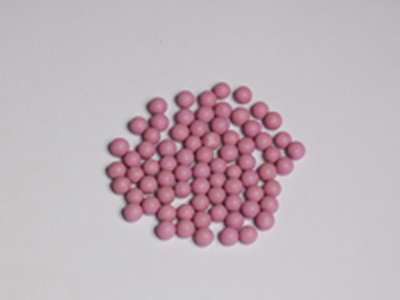
Mass finishing media serve as the media in barrel polishing. This article will give an detailed introduction to the media in barrel polishing--mass finishing media.

The word “barrel polishing” is not strange to abrasive insiders. This article will give an detailed introduction to the media in barrel polishing--mass finishing media.
Barrel polishing is widely used in every aspect of the abrasive industry, such as the bearing industry, magnetic materials, hardware tools, weaving machinery, auto and motorcycle parts, accessories, souvenirs, communication, electronics, watch parts, chains, gears, etc. The major application of barrel polishing includes the coarse grinding process, medium grinding process and polishing process. Mass finishing requires three elements: grinding media, grinding fluid and polishing equipment. Mass finishing media serve as the media in barrel polishing. Mass finishing media got its name from various shapes, such as regular triangle, and cylindrical. It is also called grinding/polishing stone, abrasive media, or barrel media in foreign countries.
Formation & Category
Mass finishing media is made out of different materials after sintering, curing at room temperature or the crushing and screening process. It can be divided into four categories based on different abrasive block materials: ceramic, resin, natural abrasives, and abrasive block made up of recyclable waste materials. Just as its name implies, ceramic mass finishing media is formed by sintered ceramic bonding agent and abrasive grains. It is sub-divided into brown corundum, white corundum, Sic, zirconia fused alumina and alumina porcelain. Resin abrasive block is formed by the resin bonding agent and filler curing at room temperature. Its includes brown corundum, white corundum, aluminum oxide and quartz. The third category includes natural abrasive grains made up of natural minerals and plant pit under the crushing and screening process. The natural minerals and plants cover natural corundum, river sand, cobble, chaff, walnut, corncob, wood block, saw powder, etc. the last type is abrasive block made up of waste grinding wheels, steel wire, steel ball, etc.
At present, the most popular ceramic and resin mass finishing media manufacturer in China is probably Mianchi Jinhua New Material Co., Ltd. According to iAbrasive, the company’s mass finishing media have learned from others’ and have completed varieties with superior quality. Its featured products include: ceramic-bonded brown fused alumina, white fused alumina, Sic, quartz, zirconia, aluminum oxide, etc. There are over 400 categories and more than 3000 specifications in total, among which high alumina micro crystalline ceramic mass finishing media and spinel lithical ceramic mass finishing media are the self-independent innovative products, filling the vacancy both in China and internationally. For the moment, its mass finishing media products sell well in international markets such as Japan, Korea, Italy, Turkey, the Middle-East, etc., and the products’ quality is well received.
Choice & Application
Now that you have a general understanding of mass finishing media, you can further learn about how to choose proper mass finishing media according to individual need.
First is the choice of sizes. It has been mentioned in the previous article that the major application of barrel polishing includes the coarse grinding process, medium grinding process, and polishing process. Therefore, we can divide mass finishing media into coarse grinding, medium grinding and fine grinding based on different expectations of workpieces. Coarse and medium grinding are often used in workpiece burring and scale cinder, etc. Fine grinding is suitable for workpiece surface roughness improvement and trace grinding. Super fine finishing is employed in workpiece surface luminance enhancement and surface dressing.
Second is the choice of specifications, which is based upon polishing workpiece appearance and the sizes of the axial groove and holes. For a flat surface or edge burr, you can usually choose abrasive block with a large scale and smaller ones to fill in the interspace so as to improve efficiency; for workpieces with an axial groove and holes, you can choose abrasive blocks with a sharp corner to achieve adequate grinding. In addition, the abrasive block size should be larger than the axial groove and holes, or two-thirds of its size in case of blocking.
The quantity of mass finishing media usually takes up 45% to 55% of the equipment volume. Mixed volume (with workpieces) accounts for 70% to 75% of the total volume. Generally speaking, the fewer the abrasive blocks, the larger tha polishing amount, the rougher the workpiece surface, the less time it takes.
Water quantity has a great influence on the polishing and grinding effect. More often than not, water reaches the mixed material surface or is 80mm to 100mm under the surface in coarse grinding, while finishing is the other way around: the water should be 20mm to 100mm above the mixed material surface.
Whether the workpiece and abrasive block are properly mixed has a strong impact on the polishing and grinding effect. The most commonly used proportion adopted is: workpiece: abrasive block equals 1:1 to 1.5. The larger the mixed proportion, the smaller the polishing amount, the rougher the workpiece surface, and the more seriously the workpiece is deformed.